#Northeastern tree
Explore tagged Tumblr posts
Text
Why You Need Expert Tree Removal Services in Massachusetts?

Northeasterntree shared this widget
Why You Need Expert Tree Removal Services in Massachusetts?

In Massachusetts, where the varied and rich terrain supports innumerable types of trees, tree clearance is a basic function. Although trees improve the region's natural beauty and ecological balance, occasionally they might endanger public safety, infrastructure, and property. Aging trees, storm damage, illness, and overgrowth can create dangerous circumstances calling for expert removal.
Massachusetts's environment, marked by severe winters, plenty of snow, and intense storms, helps trees to gradually decay. Strong winds can compromise tree structures, leading to limb break-through or whole tree collapse that can harm houses, cars, and electrical lines. Professional evaluations and routine tree inspections or tree removal Massachusetts assists to reduce these hazards therefore guaranteeing community and homeowner safety.
Indices of a Tree Requiring Removal
Although not every tree has to be taken down, several indicators suggest that it is the best line of action. Particularly if it is near a structure or regularly frequented walkway, a tree leaning noticeably might be immediately dangerous. Warning indicators of a failing tree that would not be able to endure strong storms are cracks in the trunk, hollow portions, or long dead limbs.
Source : https://writeupcafe.com/why-you-need-expert-tree-removal-services-in-massachusetts-
Last updated: April 28, 2025
Add to my page
0 notes
Text

kousa dogwood.
#trees#nature#flowers#dogwood#cornus#cornus kousa#chinese dogwood#my photos#i actually really love the fruits of these guys#like most fruits that grow on trees - taste will vary from tree to tree but i have a few i visit that reliably produce tasty fruits#the taste is (and this may seem strange) somewhere between persimmon and pumpkin#not great to eat raw but good for jams - chutneys - baked goods - and smoothies#this tree is invasive in the northeastern US#so it’s unlimited picking
32 notes
·
View notes
Text

First one of the season
Pennsylvania
11 notes
·
View notes
Text
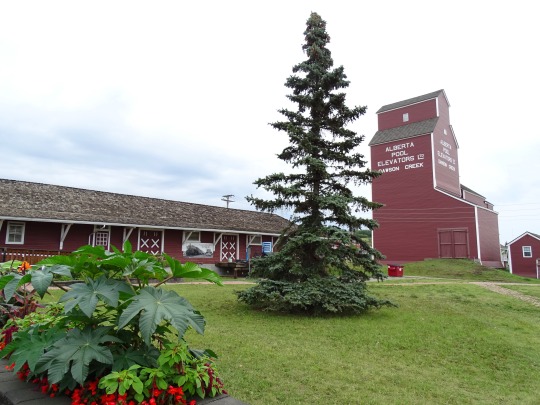


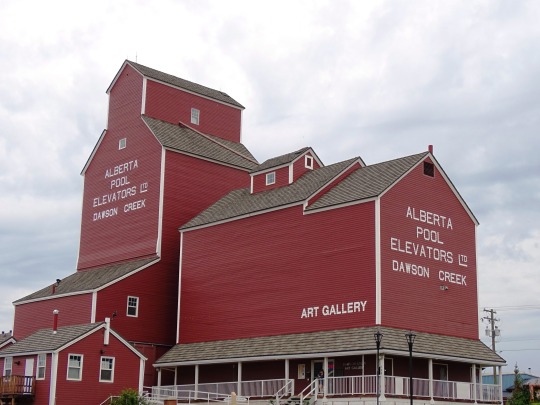
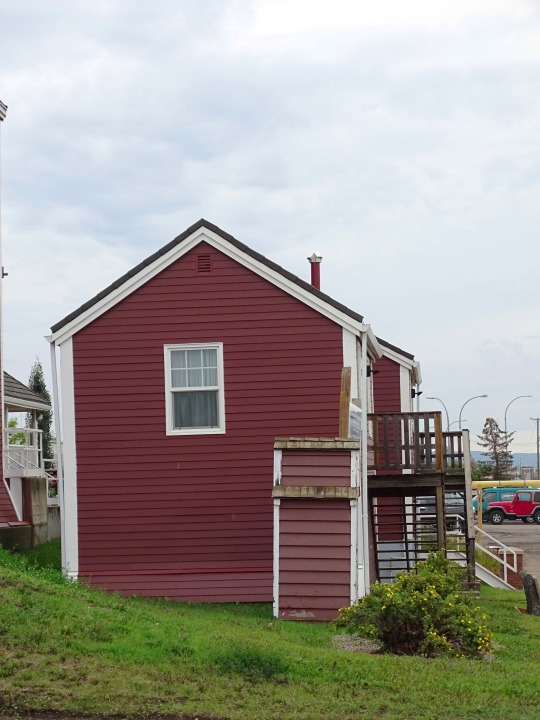

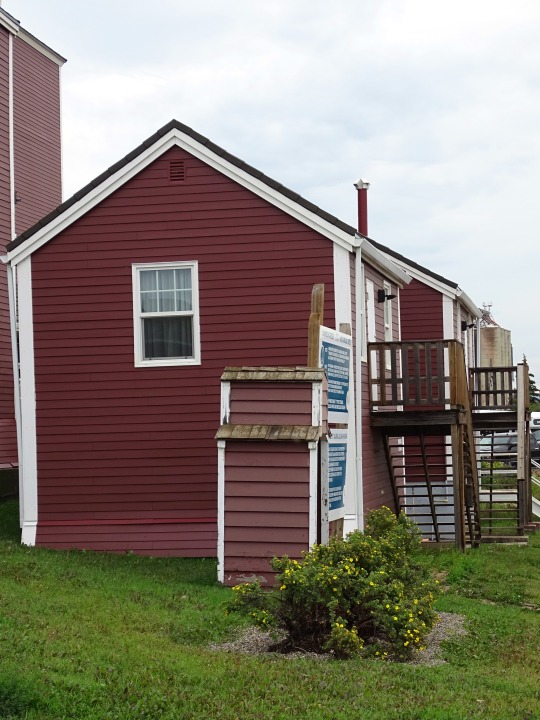
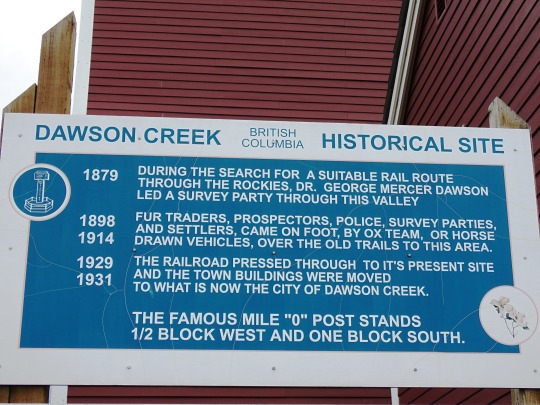


Dawson Creek, BC (No. 3)
Upon entering the war, the United States decided to build a transportation corridor to connect the US mainland to Alaska. In 1942, thousands of US Army personnel, engineers, and contractors poured into the city – the terminal of rail transport – to construct the Alaska Highway. The highway was completed in less than a year; even after the workers involved in its construction departed, population and economic growth continued. In February 1943, a major fire and explosion in a livery barn, packed with road-building supplies including dynamite, caused serious damage to the center of town; five people were killed and 150 injured. Dawson Creek became a RCAF station during WWII, in September 1944. The station disbanded in March 1946.
By 1951, Dawson Creek had more than 3,500 residents. In 1952, the John Hart Highway linked the town to the rest of the British Columbia Interior and Lower Mainland through the Rocky Mountains; a new southbound route, known locally as Tupper Highway, made the town a crossroads with neighbouring Alberta. The next year, western Canada's largest propane gas plant was built and federal government offices were established in town. In 1958, the extension of the Pacific Great Eastern Railway to the Peace from Prince George was completed, and the village was re-incorporated as a city. Between 1951 and 1961, the population of Dawson Creek more than tripled. The RCAF center reemerged on October 1, 1956 and was declared functional in 1958. It was disbanded a final time in March 1964.
Growth slowed in the 1960s, with the population reaching its all-time high in 1966, but area population increased. In the 1970s, the provincial government moved its regional offices from Pouce Coupe to the city, Northern Lights College opened a Dawson Creek campus, and the Dawson Creek Mall was constructed. Several modern grain elevators were built, and the town's five wooden grain elevators, nicknamed "Elevator Row", were taken out of service. Only one of the historic elevators remains, converted to an art gallery. Since the 1970s, with the nearby town of Fort St. John attracting much of the area's industrial development and Grande Prairie becoming a commercial hub, the town's population and economy have not significantly increased.
Since 1992, the city has undergone several boundary expansions. One expansion incorporated undeveloped land in the southeast for an industrial park and a Louisiana-Pacific Canada veneer factory. The city extended sewer and water lines to the location; however, the area was not developed and with the factory only half-built, L-P Canada abandoned its plans. A business making manufactured homes bought the factory and completed its development in 2005. Another expansion incorporated the existing oriented strand board factory in the northwest corner of the city, while further incorporations have included undeveloped land to the south and north.
Source: Wikipedia
#Dawson Creek Art Gallery#prairie elevator#Dawson Creek#NAR Station Museum#Visitor Centre#travel#original photography#vacation#tourist attraction#landmark#cityscape#architecture#British Columbia#summer 2023#Canada#Alaska Highway#NAR Park#Alcan Highway#downtown#northeastern British Columbia#BC#Alaska-Canadian Highway#street scene#Northern Alberta Railway Park#flora#flower#tree#log cabin#Mile Zero Post
5 notes
·
View notes
Text
hanging out in a small town is just driving around and sitting in parking lots
#northeastern emo#you've heard of midwestern emo#we're in the parking lot of a dollar tree#song is wicked game by chris isaak#edit#irl#toom#leckyfig
4 notes
·
View notes
Text
when i say i love America I DO NOT mean the government bitch i mean the flowers and fauna
#we have native jaguars. did you know that#crow.txt#we have so many beautiful animals native to the us#do you know what a fishercat is? you should. they’re amazing#do you know what the New York State flower is? it’s a rose#our state insect is the nine spotted ladybug#nj’s state bird is the northeastern goldfinch#I love animals so fucking much. our walnut trees are so cool#we have so many fucking living creatures that are just standing examples of beauty in the world
4 notes
·
View notes
Text
youtube
In the northeastern part of India, the greater adjutant stork has been considered an ill omen for generations, and the endangered bird has paid the price. Its breeding population here fell to just 115 birds by the 1990s.
But when biologist Purnima Devi Barman witnessed villagers chop down a tree crowned with the storks’ nests — and chicks — she launched a grassroots effort to do something about it. Today, 10,000 women across the region have banded together to protect nests, raise fledglings, and run educational programs for children and adults explaining the benefits the storks bring to their communities. They even produce textiles that celebrate the giant bird — and bring critical income and empowerment to the local women who are safeguarding its future.
These efforts have been a resounding success for greater adjutant stork conservation. A recent survey found 1,830 of the distinctive birds in Assam, and the species’ status on the IUCN Red List has been changed from “endangered” to “near threatened” — a testament to what can be achieved with community conservation.
#Nature on PBS#wild hope#solarpunk#india#Assam#greater adjutant stork#stork#hargila#bird#endangered species#near threatened species#conservation#Purnima Devi Barman#grassroots#Youtube#Asia
421 notes
·
View notes
Text
Agawa Canyon Train, Canada: A train of almost 8 hours journey that taking through the Agawa canyon showing natural beauties of Northern Canada. Forest,hills lake, trees with vivid color of fall... The Agawa Canyon is a shallow canyon located deep in the sparsely populated Algoma District in Northeastern Ontario, Canada. The Agawa Canyon Wilderness Park is only accessible by hiking trail or the Agawa Canyon station on the Algoma Central Railway, and is located 114 miles by rail north west of Sault Ste. Marie. Wikipedia
#Agawa Canyon Train Tour#Algoma District#Sault Ste. Marie#Northeastern Ontario#Ontario#Canada#north america#north america continent
445 notes
·
View notes
Text

💟 solidarity from the peoples of brazil to the people of palestine—
last year, @fairuzfan suggested that people make art in support of palestine. i planned something that was supposed to be posted on the last strike, but it took me longer than expected.
it's finished now! this is in solidarity with palestinians, including palestinian-brazilians, who have been working tirelessly for justice in brazil as well.
i chose to highlight aspects of the land that are important to palestinians and the palestinian cause: the olive trees, jaffa oranges, the figs, poppies, faqqua irises and the palestinian mountain gazelle. the figure of the woman itself is wearing the traditional thobe and headwear of ramallah, which i found! so beautiful!
for the brazilian figure i asked my grandma what she used to wear and what our family used to plant decades ago, when she lived in the northeastern countryside (she is way more familiarised with the land than me). had some help from friends of the region as well, so i drew a jaguar, manioc roots, corn, cashews, sweet potatoes, a carnaúba palm tree and mandacaru flowers.
some of those, such as manioc roots and mandacaru cacti, remind me of resilience and the sustaining of life in difficult times, and what they may allow to flourish and to go on:
vida e não apenas sobrevida. that is, "life and not only survival!"
may palestine and it's people live! live free from every form of oppression that allowed this genocide, this nakba to take place.
inspirations & sources bellow the cut.
inspired by the art of sliman mansour and dana barqawi, as well as palipunk & orangeblossombitch @ tumblr and nadasink @ instagram.

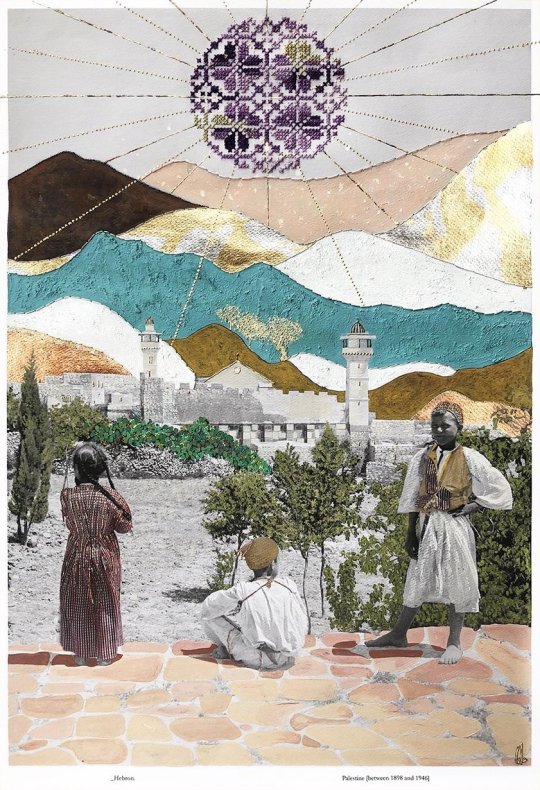
the books recommended by @palipunk (much thanks to you for making them available)
♥️ palestinian costume por jehan rajab ♥️ palestinian costume por shelagh weir ♥️ traditional palestinian embroidery and jewelry por abed al-samih abu omar
al-jazeera documentary about the preservation of palestinian thobes (i do not understand arabic yet but! it allowed me to have a closer look at the coins and headwear):
youtube
sites about tatreez
♥️ https://www.folkglory.com/ (i based the chest pannel on this item from their shop here.) ♥️ https://www.tatreezandtea.com/ ♥️ https://tirazain.com/archive
and the palestinian museum digital archive!
♥️ https://palarchive.org/
#palestine#free palestine#strike for palestine#full color#original#@troopingfairy is my main in case this seems sudden; i have been keeping up with what's happening in palestine for a while now#demiurgee draws a thing
2K notes
·
View notes
Text
June 2024 witch guide
Full moon: June 21st
New moon: June 6th
Sabbats: Litha/Summer Solstice- June 20th
June Strawberry Moon
Known as: Aerra Litha, Birth Moon, Blooming Moon, Brachmanoth, Dyad Moon, Egg Laying Moon, Green Corn Moon, Hatching Moon, Hoer Moon, Honey Moon, Lovers Moon, Mead Moon, Moon of Horses, Moon of Making Fat, Partner Moon, Rose Moon & Strong Sun Moon
Element: Earth
Zodiac: Gemini & Cancer
Nature spirits: Sylphs & Zephyrs
Deities: Aine of Knockaine, Bendis, Cerridwen, Green Man, Ishtar, Isis, Neith & Persephone
Animals: Butterfly, frog, monkey & toad
Birds: Peacock & wren
Trees: Maple & Oak
Herbs: Dog grass, meadowsweet, moss, mugwort, parsley, skullcap & vervain
Flowers: Lavender, orchid, tansy & yarrow
Scents: Lavender & lily of the valley
Stones: Agate, Alexandrite, cat's eye, chrysoberyl, emerald, fluorite, garnet, moonstone, ruby & topaz
Colors: Gold, green, orange & yellow
Energy: Abundance, balance, change of residence, communication, decision making, education, family relations, full & restful energy, love, marriage, prosperity, positive transformation, prevention, protection, public relations, relationships, responsibility, strength, tides turning, travel & writing
While strawberries certainly are a reddish-pink color and are roundish in shape, the origin of the name “Strawberry Moon” has nothing to do with the Moon’s hue or appearance.
• June's full Moon is typically the last full moon of spring or the first of summer. The June Full Moon will be extraordinary. For the first time since 1985, Full Moon happens precisely on the summer solstice, when the Sun is highest up. Because the Full Moon is always opposite the Sun, this year, you will see that the Moon is 10 widths lower on the horizon than the Sun ever is.
This “Strawberry Moon” name has been used by Native American Algonquian tribes that live in the northeastern United States as well as the Ojibwe, Dakota, and Lakota peoples to mark the ripening of “June-bearing” strawberries that are ready to be gathered. The Haida term Berries Ripen Moon reflects this as well. As flowers bloom and early fruit ripens, June is a time of great abundance for many.
Litha
Known as: Alban Heruin, Summer Solstice & Whit Sunday
Season: Summer
Element: Fire
Symbols: Besom, fairies, God's eyes, sunflowers & symbols of the sun
Colors: Blue, gold, green, orange, red, tan & yellow
Oils/Incense: Cinnamon, frankincense, heliotrope, lavender, lemon, lily of the valley, mint, musk, myrrh, orange, orange pine, pine, rose, saffron, sandalwood & wisteria
Animals: Cattle, crab, horse & octopus
Birds: Goldfinch, kingfisher, meadowlark, owl, robin & wren
Mythical: Fairies
Stones: Bloodstone, diamond, emerald, jade, lapis lazuli & tiger's eye
Food: Ale, bread, cheese, edible flowers, garden fresh vegetables & fruit, lemons, meade, milk, oranges, pumpernickel bread, summer squash & wine
Herbs/Plants: Anise, basil, betony, cinquefoil, copal, elder, fennel, fern, frankincense, galangal, hemp, ivy, larkspur, lemon, lemon balm, mistletoe, mugwort, mullien, nettle, orange, orpin, plantain, rue, saffron, sandalwood, St.John's wort, thyme, verbena, vervain, wild thyme & ylang-ylang
Flowers: Carnation, chamomile, daisy, heather, heliotrope, honeysuckle, lavender, lily, marigold, orchid, rose, wisteria & yarrow
Trees: Elder, holly, laurel, linden, oak & pine
Goddesses: Amaterasu, Aine, Anahita, Dea, Cerde, Dag, Dana, Eiru, Fenne, Gwydion, Kupala, Mabd, Phoebe, Skhmet & Sul
Gods: Apollo, Baal, Balder, Bel, The Dagda, Donnus, El, The Green Man, Helios, Huon, Jupiter, Llew, Loki, Lugh, Maui, Mithras, Oak/Holly King, Ogmios, Ra, Surya, Thor & Zeus
Issues, Intentions & Powers: Agriculture, changes, divination, ending, fertility, life, light, manifestation, power, purpose, strength, success & unity
Spellwork: Fire & water magick
Activities:
• Charge and cleanse your crystals in the solstice sun
• Make Sun water
• Create crafts with natural elements such as flowers
• Burn a paper with things that no longer serve you or that you are trying to let go
• Invite friends & family over for a bonfire and/or feast
• Gather & dry herbs for the upcoming year
• Clean, decorate & cleanse your altar with summer symbols
• Brew some sun tea
• Take a ritual bath/shower with flowers
• Make your own sun dial
• Craft a door wreath out of flowers & herbs
• Enjoy some sunrise/sunset yoga
• Volunteer at a food kitchen or animal shelter
• Plant trees (especially ones that may provide fruit or berries to feed the wildlife)
• Watch the sunset & say a blessing to nature
• Make flower infused anointing/spell oils
• Eat fresh fruits & berries
• Participate in a handfasting
• Create shadow art
The history of Litha reveals its deep connections to ancient agricultural societies & their reliance on the sun's power. Celebrated as part of the Wheel of the Year, Litha symbolizes the balance between light & darkness. Throughout history customs such as bonfires, herb gathering & the construction of sunwheels have marked this festival. Today, Litha continues to be celebrated by various communities, with gatherings at sacred sites & private rituals in natural settings. It serves as a reminder of our connection with nature and the cycles of life.
• The traditions of Litha appear to be borrowed from many cultures. Most ancient cultures celebrated the summer solstice in some way such as the Celts celebrated Litha with hilltop bonfires & dancing. Many people attempted to jump over or through the bonfires for good luck. Other European traditions included setting large wheels on fire & rolling them down a hill into a body of water.
Litha is often associated with Midsummer, a celebration that extends beyond the pagan and Wiccan traditions. Midsummer festivities are observed in many cultures around the world, including Scandinavian countries where it holds a prominent place in their cultural heritage. Midsummer dances, bonfires, & feasts are integral parts of these celebrations, often accompanied by folklore and traditional rituals that honor the sun's energy and the abundance of nature during this time.
The summer solstice is the longest day of the year & in some traditions, Litha is when The Sun(The God) is symbolically at it's peak time of power & the World will soon be ripe to harvest. It is also when The Goddess is pregnant with The God who is to be reborn at Yule.
• In the Northern Hemisphere the Summer Solstice occurs when the Sun reaches its highest and northernmost points in the sky. It marks the start of summer in the northern half of the globe. (In contrast, the June solstice in the Southern Hemisphere is when the Sun is at its lowest point in the sky, marking the start of winter.)
Some also believe the history & spirit of Litha revolve around two deities, The Oak King & The Holly King. In Wiccan and Neo-Pagan traditions, each King rules the Earth for half of the year. From Yule to Litha, the Oak King rules. On Litha, the two battled for the crown and it is then that the Holly King triumphs. The Holly King will rule through fall until Yule, and the cycle will begin again.
Related festivals:
• Vestalia- June 7th -15th
Was a Roman religious festival in honor of Vesta, the goddess of the hearth & the burning continuation of the sacred fire of Rome. It was held from 7–15 June & was reserved as a women's-only event. Domestic & family life in general were represented by the festival of the goddess of the house & of the spirits of the storechamber — Vesta & the Penates .
On the first day of festivities the penus Vestae (sanctum sanctorum of the temple of Vesta which was usually curtained off) was opened for the only time during the year, at which women offered sacrifices. As long as the curtain remained open, mothers could come, barefoot and disheveled, to leave offerings to the goddess in exchange for a blessing to them and their family.
For the last day, the penus Vestae was solemnly closed, the Flaminica Dialis observed mourning & the temple was subjected to a purification called stercoratio: the filth was swept from the temple and carried next by the route called clivus Capitolinus and then into the Tiber.
Sources:
Farmersalmanac .com
Llewellyn's Complete Book of Correspondences by Sandra Kines
Wikipedia
A Witch's Book of Correspondences by Viktorija Briggs
Encyclopedia britannica
Llewellyn 2024 magical almanac Practical magic for everyday living
#summer solstice#strawberry moon#litha#midsummer#witchblr#wiccablr#paganblr#witch community#witchcraft#witches of tumblr#witch guide#wheel of the year#sabbats#traditional witchcraft#witch tumblr#witch tips#beginner witch#baby witch#GreenWitchcrafts#moon magic#witchcore#grimoire#book of shadows#Spellwork#spellbook#witch#witchyvibes#june 2024#witchlife#witch friends
760 notes
·
View notes
Text

What is this (wrong answers only)
#nature#plantblr#us native trees#juglans nigra#black walnuts#eastern black walnut#northeastern trees#my photos
18 notes
·
View notes
Text

4 notes
·
View notes
Text

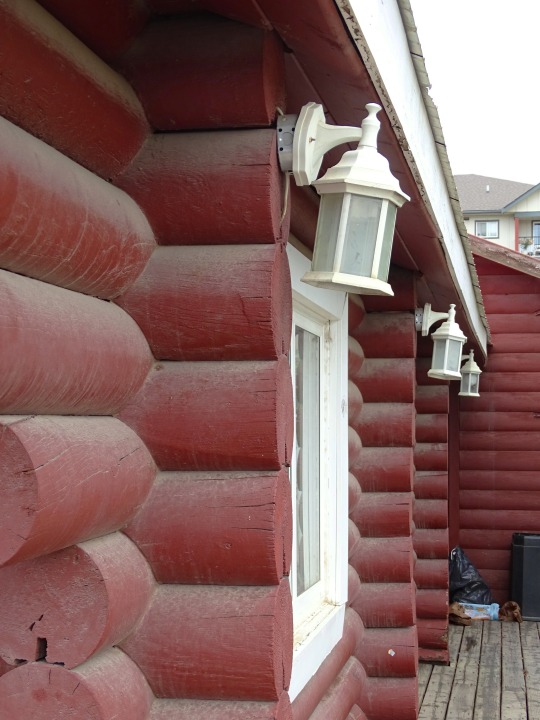








Dawson Creek, BC (No. 2)
Dawson Creek is named after the watercourse of the same name, itself named after George Mercer Dawson who led a surveying team through the area in August 1879; a member of the team labelled the creek with Dawson's name. The community that formed by the creek was one of many farming communities established by European-Canadian settlers moving west through the Peace River Country. When the Canadian government began issuing homestead grants to settlers under the Dominion Lands Act in 1912, the pace of migration increased. With the opening of a few stores and hotels in 1919 and the incorporation of the Dawson Creek Co-operative Union on May 28, 1921, Dawson Creek became a dominant business centre in the area. After much speculation by land owners and investors, the Northern Alberta Railways built its western terminus 3 km (2 mi) from Dawson Creek. The golden spike was driven on December 29, 1930, and the first passenger train arrived on January 15, 1931. The arrival of the railway and the construction of grain elevators attracted more settlers and business to the settlement. The need to provide services for the rapidly growing community led Dawson Creek to incorporate as a village in May 1936. A small wave of refugees from the Sudetenland settled in the area in 1939 as World War II was beginning. The community exceeded 500 people in 1941.
Source: Wikipedia
#Dawson Creek Art Gallery#prairie elevator#Dawson Creek#NAR Station Museum#Visitor Centre#travel#original photography#vacation#tourist attraction#landmark#cityscape#architecture#British Columbia#summer 2023#Canada#Alaska Highway#NAR Park#Alcan Highway#downtown#northeastern British Columbia#BC#Alaska-Canadian Highway#street scene#Northern Alberta Railway Park#flora#flower#tree#log cabin#Mile Zero Post
2 notes
·
View notes
Note
do you know any reptiles native to the philippines?
DO I?!?! DO I?!??!!
Yes, I do.

North Philippine Pit Viper (Tropidolaemus subannulatus), family Viperidae, Philippines
Venomous
photograph by Reptiles4all

Two-spotted Flying Lizard (Draco bimaculatus), male, family Agamidae, Bohol, Philippines
photograph by Bohol Wild Herping
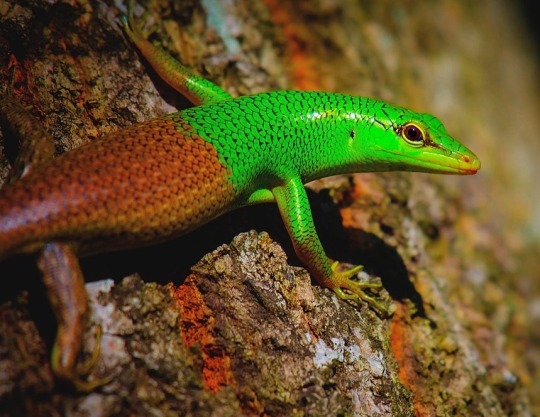
Emerald Tree Skink (Lamprolepis smaragdina), family Scincidae, Jasaan, Misamis Oriental, Philippines
photograph by Domzjuniorwildlife
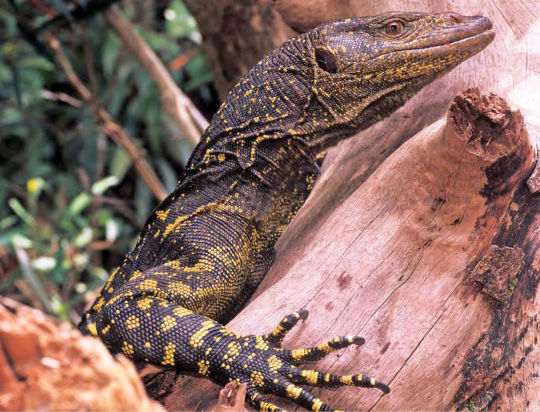
Northern Sierra Madre Forest Monitor Lizard (Varanus bitatawa), family Varanidae, endemic to the northeastern coast of the island of Luzon, Philippines
One of only 3 species of frugivorous (fruit-eating) monitor lizards, a group which is usually carnivorous.
This species is not strictly frugivorous, as they also feed on invertebrates.
photograph by ACD

Sunbeam Snake (Xenopeltis unicolor), family Xenopeltidae, Philippines
photograph by Rupert Grassby-Lewis
267 notes
·
View notes
Text
an american giant millipede (a Narceus species in the americanus/annularis complex) traversing a lichen-covered boulder on a mountaintop (Massachusetts, 8/7/23)
Sometimes referred to as “iron worms”, these large millipedes are often locally abundant in mature forests and mountainous areas in the northeastern US. They spend most of their time hidden in decayed logs and leaf litter but regularly emerge to wander in the open, climbing rocks and trees to graze on lichen. Protected by toxins that deter most predators, they do so even in broad daylight, especially during wet or cloudy weather.
2K notes
·
View notes
Text

Common Blossom Bat (Syconycteris australis)
The Common Blossom Bat is a tiny nectar-loving bat, feasting on nectar and pollen from bottlebrush, paperbark, banksia and gum tree blossoms.
Found in eastern and northeastern Australia, these bats travel long distances at night to find enough food to give them the energy they need.
But these little bats are much more visible on nights with a bright full moon. So, these tiny bats will delay their departure from their roosts to hide from predators like owls.
The Common Blossom Bat is an important pollinator of many plants, carrying six times as much pollen as birds.
credit: Hans & Judy Beste
81 notes
·
View notes